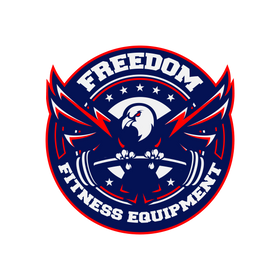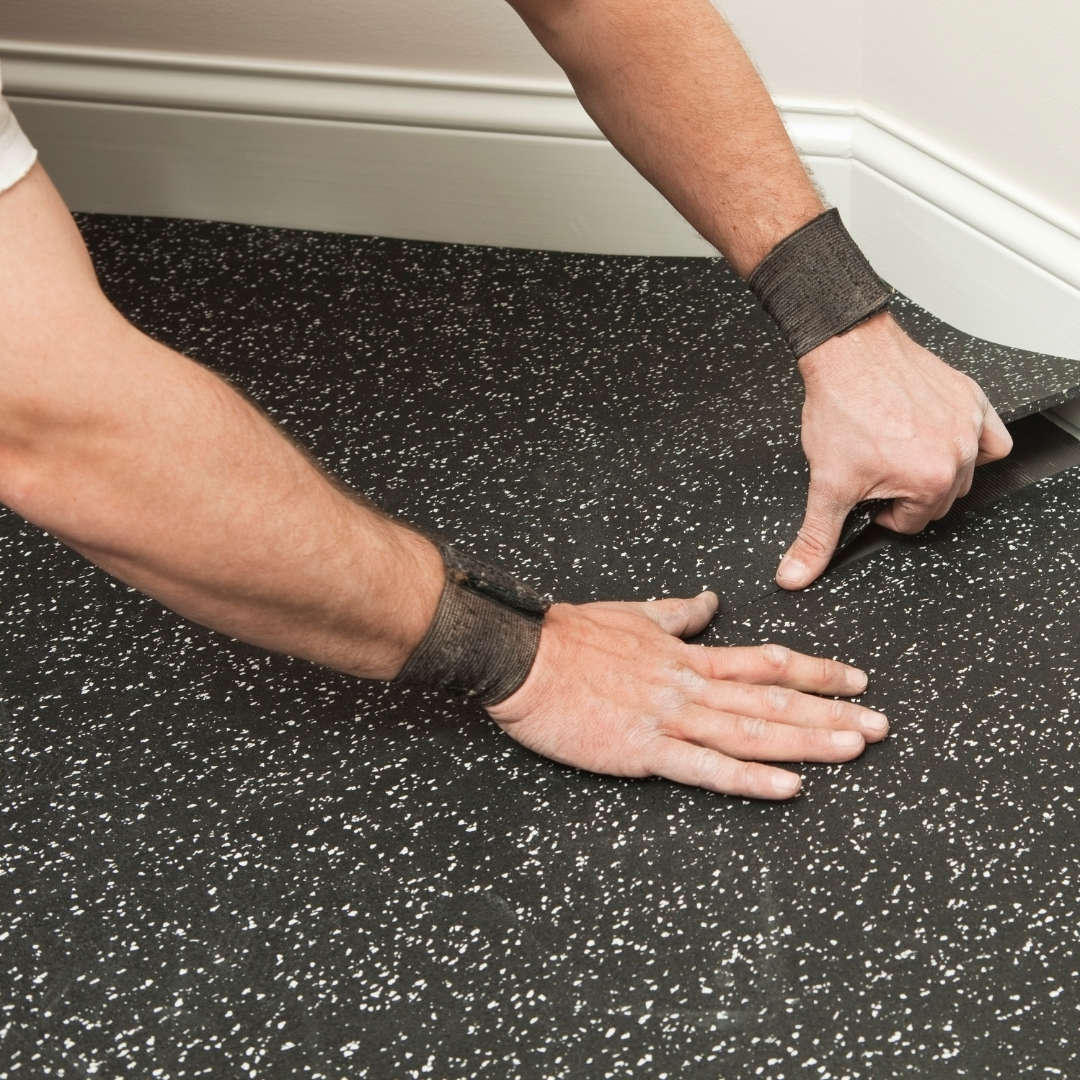Maintaining a rubber gym floor in pristine condition is essential for ensuring its durability and maintaining a clean workout space. Whether you have a home gym or manage a fitness facility, keeping the rubber flooring clean can enhance the environment and extend the life of your investment. Clean floors look appealing and reduce the risk of injuries caused by slips and falls. This guide covers everything you need to know about cleaning rubber flooring, including rubber gym flooring tiles, mats, rolled gym surfacing, and heavy-duty rubber gym tiles, from daily maintenance routines to advanced cleaning tips. By following these guidelines, you can ensure your gym floor remains in top-notch condition, offering a safe and attractive workout environment for everyone.
Essential Cleaning Supplies for Rubber Gym Floors
Before diving into the cleaning process, gathering the right supplies is essential. The proper tools will make the task more efficient and help you achieve better results. Here’s a comprehensive list of what you’ll need to keep your rubber gym floor spotless:
-
Mild Detergent or Specialized Gym Floor Cleaner: Avoid harsh chemicals that can damage the rubber surface. Opt for mild, pH-neutral detergents or cleaners specifically designed for rubber floors. These products are gentle yet effective at removing dirt and grime without causing harm.
-
Warm Water: Essential for mixing with the detergent to create a cleaning solution. Warm water helps to break down oils and residues more effectively than cold water.
-
Buckets: One for holding your cleaning solution, and a second bucket for rinse water. Choose a sturdy bucket that can withstand frequent gym floor cleaning use.
-
Soft-Bristle Brush: This brush is helpful for scrubbing tough spots without damaging the rubber. Its soft bristles ensure that the surface remains scratch-free while effectively removing dirt.
-
Mop: The right mop can significantly improve the cleaning process (more details on this in the next section).
-
Vacuum Cleaner with a Soft Brush Attachment: Ideal for removing dust and debris without scratching the floor. A vacuum cleaner with adjustable suction power and a soft brush ensures thorough cleaning without damage.
-
Microfiber Cloths: Perfect for spot cleaning and drying. Microfiber cloths are highly absorbent and gentle on surfaces, making them ideal for cleaning rubber floors.
The Best Mop for a Rubber Gym Floor
Choosing the right mop is vital for maintaining the integrity of your rubber gym floor. A good mop can help you clean efficiently without causing damage. The ideal mop should be:
Soft and Non-Abrasive: Rubber floors can be sensitive to scratches, so using a gym floor mop with soft fibers is crucial. Avoid mops with harsh bristles or rough surfaces that could damage the floor.
-
Easy to Wring Out: Excess water can seep into seams and cause damage over time. A mop that allows you to control the moisture level is essential. Look for mops with wringing mechanisms that make it easy to remove excess water.
-
Durable and Easy to Use: A durable mop will withstand frequent use and last longer, while ease of use ensures that cleaning is not a cumbersome task.
Examples of the Best Mops for Gym Floors:
-
Microfiber Flat Mop: Known for its absorbency and gentle touch on rubber surfaces, this type of mop is excellent for daily cleaning. The flat head design allows for better coverage and efficient gym floor cleaning.
-
Spin Mop: Spin mops offer excellent wringing capabilities and are easy to maneuver. They have a bucket with a spinning mechanism, making it easy to wring out excess water and keep the mop head at the proper moisture level. Ensure this is a microfiber style mop.
-
Steam Mop: While generally used for deep cleaning, ensure it’s suitable for rubber floors and doesn't overwet them. A steam mop for rubber gym floors uses heat to sanitize surfaces, but using it correctly is crucial to avoid damaging the rubber.
- NOTE: AVOID mops without microfiber heads. You do not want to purchase a mop that will spread fibers all over the floor.
Step-by-Step Cleaning Guide on How to Clean a Gym Floor
Follow these step-by-step cleaning routines to keep your rubber gym floor in top condition. Consistent cleaning maintains the floor’s appearance and ensures a safe workout environment by removing dirt and preventing buildup.
Daily Cleaning Routine for Rubber Gym Floors:
-
Sweeping and Vacuuming: Use a broom or a vacuum with a soft brush attachment to remove dust, dirt, and debris. This prevents grit from scratching the floor. Daily sweeping or vacuuming is crucial in high-traffic areas to keep the floor free of debris.
-
Spot Cleaning Spills and Stains: Immediately wipe up any spills with a microfiber cloth and a small amount of mild detergent solution. Addressing spills quickly helps prevent stains and sticky residues. Keeping a spray bottle with a diluted cleaning solution handy can make spot cleaning more convenient.
Weekly Rubber Gym Floor Cleaning Routine:
-
Mopping: Fill your buckets with warm water and add a small amount of mild detergent or rubber floor cleaner to one. Use the other bucket as a rinse bucket for your mop.
-
Mopping Technique: Dip your mop into the solution, wring out excess water, and mop the floor in sections. Make sure to rinse the mop frequently and change the water if it gets too dirty. Use smooth, even strokes to cover the entire surface. Mopping in sections ensures that the entire floor gets cleaned without missing spots.
-
Drying the Floor: After mopping, use a dry microfiber cloth to remove any remaining moisture. This step helps prevent water spots and keeps the floor safe for use. Ensuring the floor is dry is especially important to prevent slips and falls.
Monthly Deep Cleaning Routine for Rubber Gym Flooring:
-
Using Specialized Gym Floor Cleaners: For a deeper clean, use a rubber floor cleaner according to the manufacturer’s instructions. These cleaners are formulated to break down tough grime without damaging the rubber. Deep cleaning once a month helps maintain the floor’s appearance and longevity.
-
Scrubbing: Apply the cleaner and use a soft-bristle brush to scrub any stubborn areas. Focus on high-traffic areas that may accumulate more dirt. Scrubbing helps to remove embedded dirt and stains that regular mopping may not eliminate.
-
Rinsing and Drying: Ensure all cleaner residue is rinsed off with clean water, and dry the floor thoroughly with microfiber cloths. Leaving residue can make the floor slippery and attract more dirt. Thorough rinsing ensures that no cleaning solution is left behind, which could potentially damage the floor or make it unsafe.
Following Manufacturer's Instructions for the Best Way to Clean a Rubber Gym Floor
When it comes to cleaning rubber gym floors, one crucial aspect that cannot be overlooked is following the manufacturer's instructions. Rubber floor manufacturers may have specific recommendations for cleaning and maintenance tailored to the material's unique properties. These guidelines are designed to help you maximize the lifespan and performance of your floor while avoiding common pitfalls.
-
Read the Manual: Always start by thoroughly reading the manual or care instructions provided by the manufacturer. This document contains valuable information about the types of cleaners that are safe to use, the recommended cleaning frequency, and any special care tips.
-
Use Approved Products: Manufacturers often suggest specific gym floor cleaning products that have been tested and proven safe for their floors. Using these products ensures that you do not inadvertently damage the surface with harsh chemicals.
-
Follow the Procedures: Adhering to the recommended cleaning procedures, such as the dilution ratios for cleaning solutions and the method of application, helps achieve optimal results. This might include specific mopping techniques, drying times, and periodic maintenance checks.
-
Warranty Considerations: Following the manufacturer's instructions is also essential for maintaining any warranties that may come with the flooring. Using improper cleaning methods or products can void these warranties, leaving you without coverage in case of damage or defects.
Common Gym Floor Cleaning Mistakes to Avoid
To keep your rubber gym floor in the best condition, steer clear of these common mistakes. Avoiding these errors will help preserve the floor’s integrity and extend its lifespan.
-
Using Harsh Chemicals or Abrasive Tools: These can damage the rubber surface and shorten its lifespan. Stick to mild detergents and soft cleaning tools. Harsh chemicals can cause discoloration and deterioration of the rubber material.
-
Overwetting the Floor: Excess water can lead to mold or mildew and damage the rubber material. Always wring out your mop thoroughly before use. According to OSHA Standard 1910.22, floors should be kept clean and, to the extent feasible, dry to prevent slip hazards and maintain a safe environment.
-
Neglecting Regular Maintenance: Skipping routine cleaning can lead to the buildup of dirt and grime, making it harder to clean in the long run. Regular cleaning keeps the floor looking new and prevents damage. Consistent maintenance is key to preventing long-term issues.
-
Not Rinsing Cleaning Solutions Properly: Leaving residue can make the floor slippery and attract more dirt. Always ensure you rinse and dry the floor thoroughly. Proper rinsing ensures that no gym floor cleaning agents remain on the floor, which could cause a hazardous, slippery surface.
Advanced Tips for Cleaning Rubber Gym Floors
For those looking to go the extra mile in maintaining their rubber gym floors, here are some advanced tips. Implementing these strategies can help keep your floor in excellent condition for many years.
-
Periodic Professional Cleaning: Consider hiring professionals for deep cleaning once or twice a year to ensure your floor stays in top condition. They have the tools and expertise to handle tough stains and grime and provide a thorough cleaning that regular maintenance may miss.
-
Inspecting and Addressing Wear and Tear: Regularly check for any signs of damage or wear and address them promptly to prevent further deterioration. Small issues, like minor tears or wear spots, can often be repaired if caught early. Regular inspections can help identify potential problems before they become significant issues.
-
Preventing Damage: Use mats under heavy equipment to prevent indentations and scratches. Encourage gym users to clean their shoes to reduce dirt and grit before entering the gym. Placing mats in high-traffic areas and under equipment can significantly reduce wear and tear on the rubber floor.
Conclusion
Regular cleaning and adequately maintaining rubber gym floors are essential for ensuring a safe, hygienic, and long-lasting workout environment. Following the outlined steps and avoiding common mistakes can keep your rubber gym floor looking and performing its best for years. Make cleaning a part of your routine, and enjoy the benefits of a pristine gym space.
Maintaining a clean gym floor enhances the appearance of your workout area and contributes to a healthier and more enjoyable exercise environment. By taking the time to care for your rubber gym floor, you can ensure that it remains a valuable and durable part of your fitness space. Happy cleaning!
For more insights on choosing the right flooring, check out The Best Gym Flooring for Home Gyms and Commercial Facilities.

